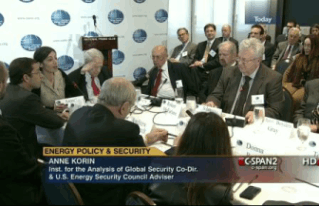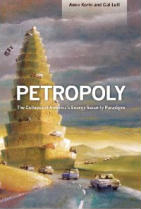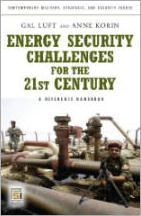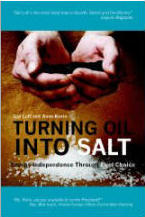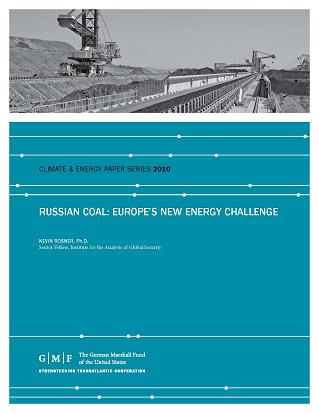By the snail’s pace at which change happens in most international organizations, the North Atlantic Treaty Organization has been on a tear. In May, Chicago hosted the 2012 NATO Summit where the future of Afghanistan and NATO’s role in it took top billing. Also, if one scrolls down through the Summit Declaration one finds some indication of the direction that energy security will take within an Alliance context in the future.
Afghanistan
History is waiting to be made in a post-2014 Afghanistan. As the Alliance’s 2012 Chicago Summit Declaration points out, NATO’s role will soon undertake a historic shift from a combatant role to a large-scale training mission designed to train and support a professional Afghan National Security Force (ANSF) to defend the national government and the nation from permanent partition into both large and small swaths of territory ruled over by tribal war-lords.
By any measure, Afghanistan’s future as a consolidated state will rest not only on the national government’s ability to build and maintain national cohesion--where little exists today-- but also in providing a framework for facilitating the development of network systems that can provide the economic backbone to support and empower the country’s economy for the welfare of the Afghan people. At the heart of development and the nation’s security and sustainability will be the availability of electric power, or lack thereof, as a network industry determinant for human development.
A second scenario for a post-2014 Afghanistan is that it will revert to a more-or-less feudal collection of fiefdoms that will resist efforts to collectivize (national) problem solving dismissing the probability of economies of scale in power generation and distribution. On the energy-only side of this equation, decentralized power generation and distribution may not be all bad but requires detailed and thoughtful consideration. It’s worth pointing out that many in the development community don’t like this option. Fashioning the country’s power map into separate, and independent micro-grids appears to many exactly what they don’t want the country to become, i.e. a morass of regions largely, from an electric power standpoint, independent from one another. To others, this option just looks bad. It might be suggested that a dialogue needs to take place in order to decide what configuration of power generation and distribution is best suited to the geography, ethnic diversity, topography, economy and existent disconnects and divisions present in Afghanistan today.
Afghanistan today
One could easily argue that Afghanistan doesn’t need economies of scale in power generation and distribution because it has no economy that demands it. According to the World Bank, the percentage of the population with access to electricity in Afghanistan is among the lowest in the world. The Ministry of Energy and Water estimates that about 30% of Afghans have access to electricity from grid-based power, micro-hydro or solar panel stations. The situation has improved in the major urban population centers along the critical North East corridor between Mazar-e-Sharif and Kabul, following the import of power from Uzbekistan and the rehabilitation of three hydro plants (Mahipar and Sarobi completed, and Naghlu ongoing). Increasing parts of some urban centers, for example Kabul, Herat, Mazar-e-Sharif, and Pul-e-Khumri, now have a theoretical 24-hour power supply but reliability remains allusive. This is of course particularly challenging for industry to contend with in the absence of a secondary, back-up power generating source.
A second important fact is that according to UNDP, over 70% of the Afghan population lives in rural areas (practicing agricultural and related rural activities that rely heavily on use of natural resources) and 85% of these residents have no access to electricity. The UN Common Country Assessment (CCA) in 2004 found that, agriculture, not including poppy cultivation, generates about 40% of the GDP and employs about 70% of the labor force and is the major source of livelihood in the country.
Based on population dispersion and concentrations, what the figures tell us is that there are only a few select corridors based on present population patterns that could feasibly support large scale industrial development from a simple demographic standpoint. Diversifying away from dependence on agriculture (subsistence versus commercial at present) into alternative industrial sector development is therefore limited by population constraints as well as by the absence of large-scale market demand for power outside of dense urban areas.
On the other hand, we know that if there is a lack of available power there will be a lack of development. It is simple as that. Nation building is not the Alliance’s traditional role but one that has been hoisted onto its shoulders by history. So it is the donor community in post-2014 Afghanistan that will shoulder this burden and which should carry out this dialogue regarding Afghanistan’s energy future and how it can contribute to future peace and security in this war-ravaged region.
Another real challenge to this country’s energy future is that in an age of seemingly unending economic misery (Afghanistan is near the misery epicenter with the world’s 214th lowest level of GDP/per capita) there is no real external appetite for nation-building in a nation, as it is often perceived, without a national desire and motivation to change. In short, providing the energy pathways for development is challenging but doable. Providing the market that can ultimately pay for these pathways, whether it be Afghan national transmission and distribution systems or smaller and more flexible micro-grids, is an even greater obstacle which will need to be overcome.
Yet a third energy dilemma deserves addressing. There is a direct correlation between per capita energy consumption and human development and unfortunately Afghanistan ranks low on both scales as well. According to the Human Development Index for 2010, Afghanistan is ranked 155th among 169 United Nations member states. Starting from such low departure points, improvements in both could be feasibly accelerated in the 2014 period. However major barriers, some obvious and others opaque, could undermine even the most modest development expectations for the state.
Foreign Money
One rather contentious challenge to Afghanistan’s future is the role of foreign money (donor or sovereign) will have on Afghan society as it filters (or is siphoned off) through the economy. It is ostensibly acknowledged that the country needs money from all available sources that wish it well. But there is growing evidence that available finance does not result in quid pro quo successful problem solving yet rather, in an Afghan system lacking among other things rule of law, good governance, accountability, corruption is being perpetuated. So as NATO nations have spent countless hundreds of billions of dollars, euros, and yen—in addition to the enormous human cost as measured by the loss of thousands of military and civilian lives in the struggle for this country—is a post-2014 Afghanistan to be lost to the next highest bidder as NATO nations and partners (and their money to a large extent) retract and others line up to profit from Afghan engagement?
The Role of the Turkmenistan-Afghanistan-Pakistan-India Pipeline (TAPI)
One possible solution to funding a future Afghan state is the development of the TAPI pipeline which has been covered (and is again addressed in this issue) of the Journal of Energy Security. On the upside, the pipeline could provide significant transit-fee revenue for a national government estimated at $300 million per annum. On the downside, the pipeline could provide significant transit-fee revenue to regional war-lords reinforcing the country’s fragmentation. In both cases, the pipeline as a money-spigot—if not channeled properly—could reinforce the country’s level of corruption in the absence of improved governance and an institutionalization of the rule of law both which appear even more remote and improbable than the construction of a $10 billion, 1680 kilometer pipeline passing directly through one of the most war-torn areas of the world.
Second, the TAPI pipeline is not the solution to Afghanistan’s energy woes as for Afghanistan itself it is not designed for gas-off take which could be used for gas fired power generation as an alternative to the country’s hydro-dependent energy infrastructure. While corrupt Afghan national officials, and local henchmen may benefit from ensuring the unencumbered transit of Turkmen gas to downstream Pakistani and Indian end-users, there exists the potential of a disconnect between regions of the country that economically benefit from protecting the pipeline and those that don’t. Whether this would set in motion additional forces for fragmentation is unknown but the likelihood of this evolving into an unintended impact of TAPI should also be addressed by its supporters among them ASEAN and the United States.
Finally, the last thing as post-2014 ISAF needs is to be drawn into the physical protection of a TAPI pipeline. While NATO has critical infrastructure protection as one of the issues to address within its energy security mandate NATO nations hardly envisioned experimenting with this across the mountains and deserts of Afghanistan. A real question worth asking is whether the construction of TAPI would provide an attractive target for multiple criminal, political, and other actors prone to using violence to undermine a future Afghan state?
Back to NATO
The Chicago Summit Declaration also included some invigorated language supporting a new (Lithuanian based) NATO Energy Security Center of Excellence (ENSEC COE) as well as a much more nuanced understanding in what direction NATO energy security activities will lead in the future. In short the declaration states that the Alliance will work towards significantly improving the energy efficiency of our military forces; develop our competence in supporting the protection of critical energy infrastructure; and further develop our outreach activities in consultation with partners, on a case-by-case basis. To this end, IAGS, the publisher of the Journal of Energy Security, participated in and supported two NATO events over the past several months. First, IAGS presented some initial findings on NATO Member State military oil use (operational energy) at the Supreme Allied Command Transformation Conference in Zagreb, Croatia in June. According to these findings NATO member state militaries combined consume some 625,000 barrels of oil a day at an annual cost of some $21 billion/annum. In an age of fiscal austerity, and significantly reduced military spending, it was recommended that a comprehensive study of military energy efficiency be carried out with an focus on oil use in order to highlight the strategic (and financial vulnerabilities) associated with a single-fuel (oil) dependent Alliance. Such a baseline study would provide the metrics for NATO operational energy use and would be very useful in charting the success or failure of a future strategy to reduce oil-only military energy use in the future.
Secondly, IAGS will provide a focus in its 2013 program of work on critical infrastructure protection (CIP) which will be covered extensively in the pages of the JES. This effort in part could help support and address the work of the new and pending NATO ENSEC COE over the coming years particularly in its outreach activities with private sector partners. Whether this hope comes to fruition remains to be seen, but there is no doubt that attacks against CIP do and shall remain a part of the global energy security landscape. Stay tuned.



 Archive
Archive 



